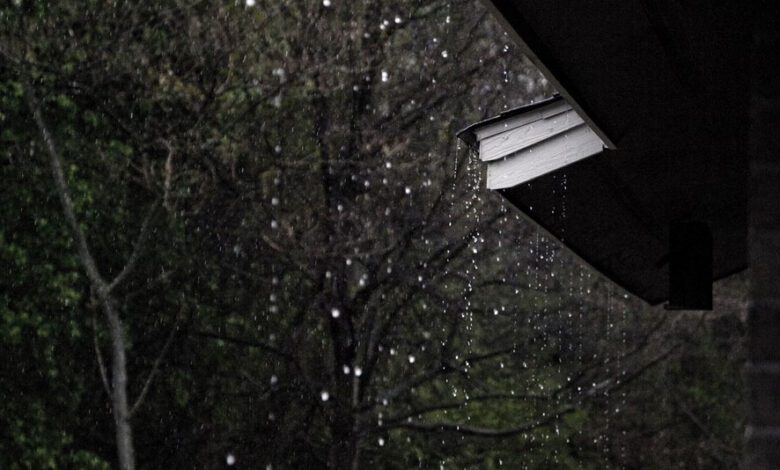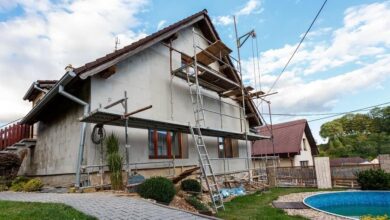4 Tips to Make Your Home Ready for the Rainy Season

The rainy season is welcomed with open arms by Americans—after all, downpours offer respite from the sweltering summer heat. Raindrops pattering against the Earth sure bring relief, but a host of problems also accompany them. Leaks, waterlogging, and broken trees are some common issues homeowners complain of in the monsoon season.
While most states will experience a drier-than-average summer, NOAA’s precipitation outlook for June, July, and August indicates that the Northeast will witness substantially more rainfall than is typical. If you live in the Northeast, consider preparing your home for the monsoon season. You will have to deal with unpleasant surprises if you don’t.
Here, we’ll share some tips to help you make your home ready for the rainy season.
#1 Waterproof the Walls and Roof
Cracks on the walls or roofs may not catch your attention during the summer season. But they won’t go unnoticed during the rainy season when water seeps through them, leading to structural damage, mold growth, and dampness.
Clearly, waterproofing leaky walls and roofs is crucial before the rainy season. Inspect the roofs and walls for cracks or holes. Check nooks and crannies particularly well. Use caulk or waterproof sealants to fill the cracks or openings and prevent water infiltration.
Consider applying a waterproof coating or membrane to vulnerable areas such as balconies, roofs, and exterior walls. It will create an impermeable barrier against moisture.
Installing barge boards on the roof can further protect your home from harsh weather. While the primary purpose of a barge board is to enhance a property’s look, it does a great job of keeping the roof dry and minimizing the risk of water damage and leaks.
These boards, also known as fascia boards, are installed along the roof’s edges to protect it from water damage. Barge boards prevent water from infiltrating the roofing material by directing it away from the edges of the roof. These boards are made of various materials. The most common materials, Belco Forest Products notes, are fiber cement, real wood, and OSB.
Also, treat signs of water damage in the interiors because they are unsightly and ruin your home’s beauty. These include bubbling or peeling paint, water stains, and mold.
#2 Clean Your Gutters and Drains
A buildup of debris, dirt, tree roots, and unwanted objects can cause your drains to clog. Unclogging them before the rainy season arrives must be your priority. Or, rainwater won’t flow freely through them and back up and flood your backyard.
A flooded yard will not only attract pests and lead to soil erosion and diseases, but it will also cause structural damage. You can eliminate these issues by cleaning gutters and drains before it rains cats and dogs.
Eliminate debris, tree roots, and all foreign materials from the gutters. A garden trowel or a scoop will ease the process, so keep it handy before you undertake the task of cleaning gutters and drains. Also, make sure the downspouts are clear and free-flowing. This will allow the rainwater to drain away from your home, preventing waterlogging.
#3 Seal the Doors and Windows
If your home’s doors and windows aren’t sealed properly, rainwater will trickle into your space. Not only will you have to deal with mold growth, but rainwater seepage will damage the wall paint and the furnishings. Sealing the doors and windows, therefore, is important.
Replace the seals and weatherstripping around doors and windows if they show signs of wear or damage. Water stains on the seals or weatherstripping or the adjacent wall and difficulty opening or closing the window indicate damage.
Be sure to invest in quality seals and weatherstripping. They will prevent water intrusion and help maintain a comfortable and secure indoor environment.
Consider installing rubber gaskets on the base of the balcony door and the entrance door to prevent rainwater from entering your space. Fill in cracks or gaps around the window frames and doors by applying sealant or caulk. This will create a watertight barrier, preventing water from entering your space.
#4 Trim Trees and Secure Outdoor Furniture
Heavy rain and strong winds can cause trees to topple over and branches to break. Not only will they damage your property, but also power lines and other structures. Trimming them before the onset of the rains will mitigate the risk significantly.
In addition, secure outdoor furniture, garden decor, and other loose objects. Strong winds can cause these items to turn into projectiles, damaging your property and your neighbors’. Anchor outdoor furniture, umbrellas, garden decor, and other items so that they don’t blow away in strong winds. Also, consider storing lightweight items in the garage or the garden shed.
To wrap things up, preparing your home for the monsoon will help you deal with the challenges of the season. Following these tips will help you make your home ready for the monsoon season. Additionally, stay informed about weather forecasts. Doing so will help you tackle the challenges that the monsoon season may bring.



